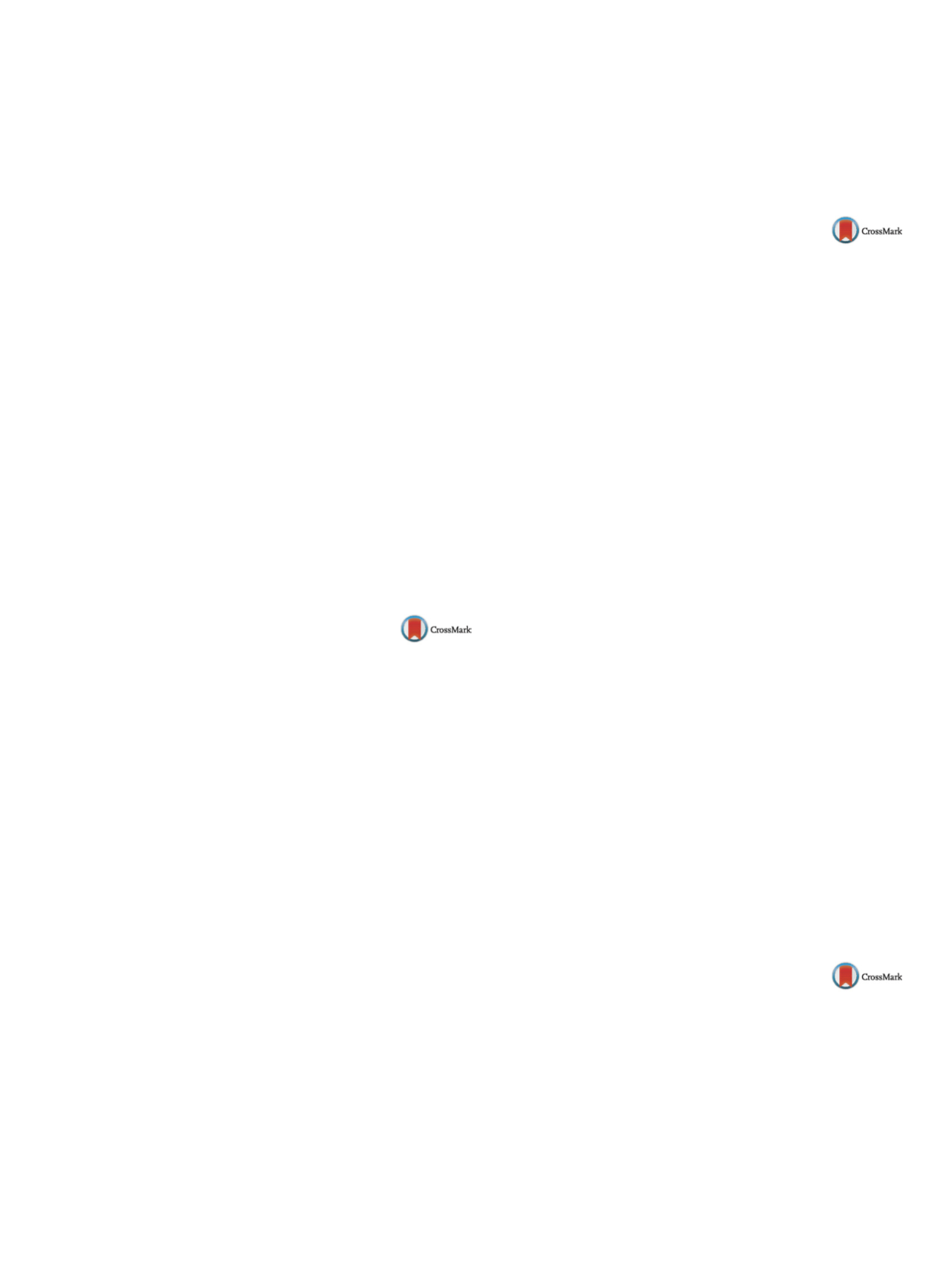

25th European Congress of Psychiatry / European Psychiatry 41S (2017) S521–S582
S563
Introduction
Clinical practice in emergency room and crisis unit
is often fraught with pitfalls (Immediate demands, accelerated
temporality, difficulties working with family and care network).
This practice contains specific clinical therapeutic interventions
based on recognized theoretical frameworks. These theoretical
frameworks constitute “formal knowledge”. They help to diag-
nose but have got limitations. In fact, clinical competence requires
also technical and interpersonal skills (“know-how”) as well as
reasoning skills and clinical intuition (“Informal knowledge”). All
these knowledge and skills are built over clinical experience based
on trainings and supervisions, continued clinical reasoning and
exchanges with colleagues.
Objectives
Our research aims to capture therapeutic processes in
clinical crisis intervention by illustrating what experts really do in
their clinical practice and above all, how they do.
Aims
Our study illustrates several crisis situations, moment-by-
moment, by analyzed experts’ voices.
Method
Our method is grounded in a first person epistemology
and used a qualitative methodology focused on explicitation inter-
view. Ten crisis interviews were analyzed in a micro and macro
perception.
Results
Our research based on experts’ voices has identified a
series of therapeutic techniques and principles who are essential
to better intervene in clinical crisis intervention. A model of inter-
vention was developed to train debutant clinician.
Conclusion
We believe that reflexivity is a powerful attitude to
understand and transform practices in a lasting way.
Disclosure of interest
The authors have not supplied their decla-
ration of competing interest.
http://dx.doi.org/10.1016/j.eurpsy.2017.01.818EV0489
Interpersonal sensitivity in the at-risk
mental state for psychosis in Karachi,
Pakistan
A. Mushtaq , B. Fatima
∗
, A.A. Fatema , H. Syed , H. Sohail
Bahria University, Institute of Professional Psychology, Karachi,
Pakistan
∗
Corresponding author.
Introduction
Interpersonal sensitivity can be explained as a
personality trait in which there is an excessive and expanded
awareness of the behavior and emotions of others. Individuals hav-
ing high interpersonal sensitivity are sensitive to interpersonal
relationships and self-deficiencies in comparison to others. Studies
report that high interpersonal sensitivity can cause low self-esteem
and feelings of insecurity.
Objectives
The objective of this study was to examine the level of
interpersonal sensitivity in individuals with an at-risk mental state
(ARMS) for psychosis compared to the individuals not at risk for
psychosis.
Methods
A total sample of 50 individuals was recruited from
Bahria University, Karwan-e-Hayat and Karachi Psychiatric Hospi-
tal: 25 with ARMS for psychosis and 25 participants who were not
ARMS, according to scores on Schizophrenia Proneness Inventory-
Adult (SPI-A). All of the participants then responded to self-report
questionnaire on Interpersonal Sensitivity Measure.
Results
Results showed that the group with ARMS had a sig-
nificantly higher interpersonal sensitivity on average (112.5) as
compared to healthy individuals (91.8). Results show significant
difference in both of the groups (
t
= –5.049;
P
< .0001) indicating
that interpersonal sensitivity in people with ARMS was relatively
high compared to those who were not at risk.
Conclusion
This study suggests that being ‘hypersensitive’ to
interpersonal interactions is a psychological feature of the poten-
tially prodromal phase of psychosis. Addressing difficulties in
interpersonal relationships and offering early psychotherapeutic
interventions can be beneficial, not only in averting serious illness,
but preventing loss to individual and national productivity.
Disclosure of interest
The authors have not supplied their decla-
ration of competing interest.
http://dx.doi.org/10.1016/j.eurpsy.2017.01.819EV0490
Reducing restraint with clozapine in
involuntarily admitted patients with
schizophrenia
P. Ifteni
∗
, A. Teodorescu
Universitatea Transilvania din Brasov, Facultatea de Medicina,
Brasov, Romania
∗
Corresponding author.
Introduction
In the entire world, restraint and seclusion are
common interventions in psychiatric in-patient settings due to
aggressive behavior.
Objectives
Our objective was to test for the immediate anti-
aggressive property of clozapine compared to other antipsychotic
treatments in an enriched cohort with high rates of restraint during
early hospitalization.
Methods
We present a retrospective chart review in all invol-
untary admissions with schizophrenia during 2011–2014 in
Psychiatry and Neurology Hospital, Brasov, Romania. Timing and
number of restraints in addition to clinical, demographic and
treatment characteristics were extracted. Based on our earlier
observation of clinical efficacy of early, fast titration of clozapine,
we tested the hypothesis that clozapine treatment was associ-
ated with reduced use of restraint, and with longer restraint-free
periods.
Results
In 115 patients with schizophrenia (age = 39.7
±
11.1 years; male = 59%) involuntarily admitted due to exter-
nalized (74.78%) or self-directed violence (25.22%), restraint was
used in 89.6%; with amedian duration of 3 hours until restraint past
admission. Antipsychotics used immediately after hospitalization
included haloperidol (70.4%), clozapine (11.3%), olanzapine (10.4%)
and other second-generation antipsychotics (7.9%). Comparison
of restraint characteristics favored immediate clozapine use with
highly reduced rates of restraint (38.5% vs.95.6%.
P
< 0.001) and
significantly extended hours until restraint ([118 h,24 h, 426 h]
vs.[3 h,0.25 h, 48 h]; median; 25th, 75th percentile;
P
< 0.001)
relative to the remaining cohort. These effects remained highly
significant after controlling for potential moderators of restraint
use in multivariate models.
Conclusions
These retrospective data suggest an early anti-
aggressive effect of clozapine during the immediate use of
clozapine in highly problematic patients.
Disclosure of interest
The authors have not supplied their decla-
ration of competing interest.
http://dx.doi.org/10.1016/j.eurpsy.2017.01.820EV0491
The 4-hour window: UK Government
targets versus clinical priorities
D. Cumming
Forth Valley Royal Hospital, Psychiatry, Larbert, United Kingdom
Introduction
In 2002, the Department of Health (United King-
dom) introduced a 4-hour target due to long waiting times. It is
expected that 95% of patients who attend the A&E (Emergency)
Department should be registered and admitted/discharged within
4 hours. Exceeding this is termed a “breach”.
Objectives
The aim of this re-audit was to assess for a response
following recommendations after an initial audit with concerning
results. ForthValley Royal is an acute public hospital inCentral Scot-
land with 860 in-patient beds, covering a population of 300,000. It


















